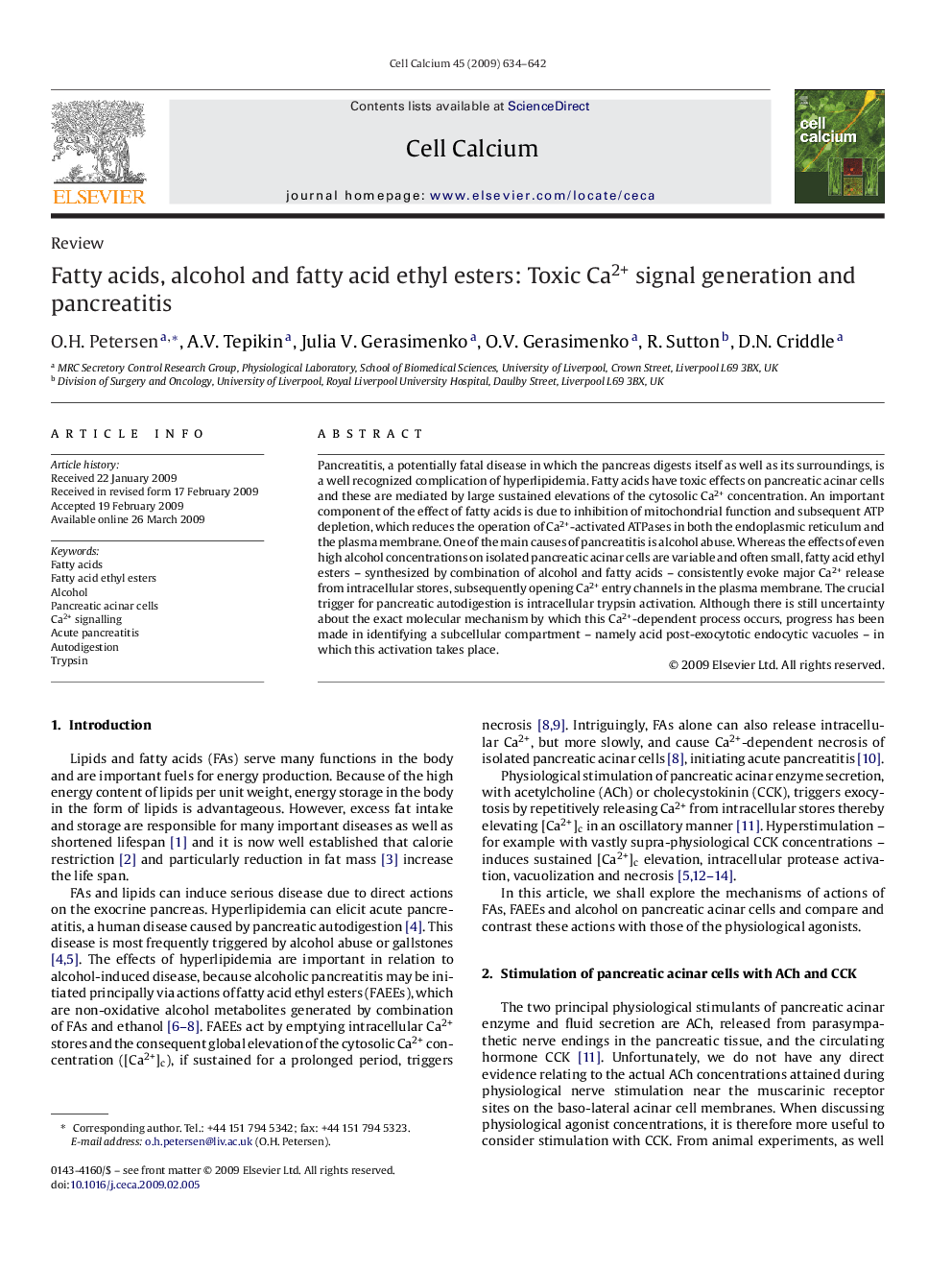| Article ID | Journal | Published Year | Pages | File Type |
|---|---|---|---|---|
| 10926474 | Cell Calcium | 2009 | 9 Pages |
Abstract
Pancreatitis, a potentially fatal disease in which the pancreas digests itself as well as its surroundings, is a well recognized complication of hyperlipidemia. Fatty acids have toxic effects on pancreatic acinar cells and these are mediated by large sustained elevations of the cytosolic Ca2+ concentration. An important component of the effect of fatty acids is due to inhibition of mitochondrial function and subsequent ATP depletion, which reduces the operation of Ca2+-activated ATPases in both the endoplasmic reticulum and the plasma membrane. One of the main causes of pancreatitis is alcohol abuse. Whereas the effects of even high alcohol concentrations on isolated pancreatic acinar cells are variable and often small, fatty acid ethyl esters - synthesized by combination of alcohol and fatty acids - consistently evoke major Ca2+ release from intracellular stores, subsequently opening Ca2+ entry channels in the plasma membrane. The crucial trigger for pancreatic autodigestion is intracellular trypsin activation. Although there is still uncertainty about the exact molecular mechanism by which this Ca2+-dependent process occurs, progress has been made in identifying a subcellular compartment - namely acid post-exocytotic endocytic vacuoles - in which this activation takes place.
Keywords
Related Topics
Life Sciences
Biochemistry, Genetics and Molecular Biology
Cell Biology
Authors
O.H. Petersen, A.V. Tepikin, Julia V. Gerasimenko, O.V. Gerasimenko, R. Sutton, D.N. Criddle,
